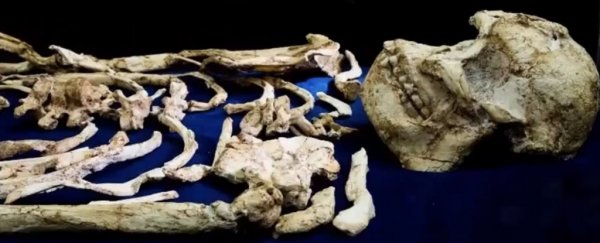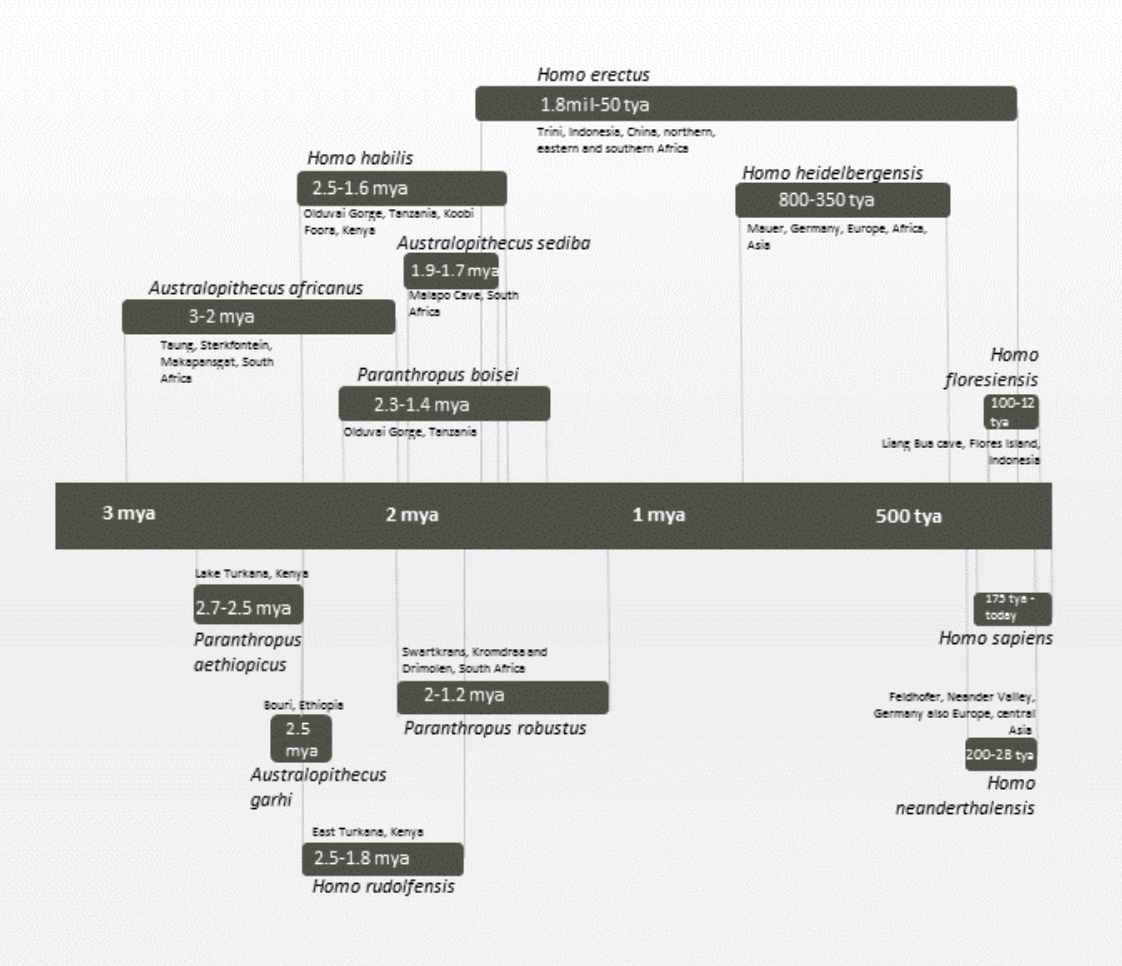One of the best-known fossils in paleontology, a virtually complete skeleton nicknamed "Little Foot", could actually represent an entirely new species of early human, scientists have announced.
The fossil was first discovered more than 20 years ago, and after decades of careful extraction and research, an analysis of the age, skull and limbs has finally been published.
While the results have yet to be peer reviewed, a series of four pre-printed papers suggests that Little Foot could be a species of Australopithecus we have never seen before.
In fact, the authors think this fossil may be one of the earliest signs of human-like walking ever found, an important stepping stone in our journey from the trees to the ground.
Australopithecines are an extinct group of early humans that existed about two to four million years ago, including the famous fossil "Lucy", which belongs to the species Australopithecus afarensis.
Discovered in the Cradle of Humankind in South Africa, Little Foot is the most complete Australopithecus fossil ever found, with an incredible 90 percent of the skeleton surviving.
But that's not the only thing that makes Little Foot unique.
Ronald Clarke, the paleoanthropologist who first discovered this fossil, has been convinced for over a decade that Little Foot is its own distinct species and not a part of A. africanus after all, as was first proposed.
Now, he's put his hunch to the test. The new analysis reveals that Little Foot is the oldest Australopithecus fossil ever found, a million years older than previously thought, clocking in at 3.76 million years of age.
This early human was found to be surprisingly large, an elderly female standing at about 130 centimetres in height, just centimetres short of modern day humans.
And unlike A. africanus, her face appears to be flatter with larger teeth and a big gap between her upper canines and incisors. This suggests Little Foot was primarily vegetarian, whereas A. africanus was thought to be more omnivorous.
Her limbs offer a few more intriguing clues. For instance, the hip joint on Little Foot was found to be quite different to A. africanus.
In the end, all four papers have convinced Clarke and his team that Little Foot does not belong to A. africanus, or any other species of Australopithecus for that matter.
On the contrary, they argue it is an interim species, squeezed somewhere between early Australopithecines, like A. afarensis, and the first Paranthropus - a hominin descended from the Australopithecines that co-existed with early Homo species for about a million years.
Placed at this particular spot in the human lineage, Little Foot is an important bridge between tree climbing and bipedal walking.
In the study, Little Foot's legs were found to be longer than her arms, and this implies she could walk on two feet for medium-to-long distances.
Together with her age, this suggests that Little Foot may have been one of the first Australopithecines to start walking like modern humans.
As one of the first, however, she would have still had quite a few chimpanzee traits.
Her anatomy suggests, for instance, that she would have struggled to carry objects while she walked on two feet - something that chimpanzees also have problems with.
And, as well as walking, she was also quite suited to climbing in the trees. This suggests that as Little Foot roamed through a mix of terrain, including tropical rainforest, broken woodland and grassland, she would have been comfortable either walking or climbing.
Instead of coming up with a brand new name for this distinct species, Clarke is in favour of labelling Little Foot as Australopithecus prometheus - a name that was put forward in 1948 but which has fallen out of use since.
Of course, we need to remind you once again that none of this has been published in a peer-reviewed journal as yet, and so until it has been scrutinised by other experts in the field, we need to take the findings with a big pinch of salt.
Already, not everyone agrees. A team of scientists at the University of Wisconsin-Madison also researching Little Foot isn't convinced by the papers.
John Hawks, a paleoanthropologist on this team, personally thinks that Clarke is jumping the gun. He says that while Little Foot may very well belong to a new species, at the moment, we just don't have enough information to make that conclusion.
"What I am not seeing in these papers is the data," he told New Scientist.
Luckily, more research is on its way. Hawks and his team will be publishing further results early next week.
And Clarke and his team are not through, either. They are still working on studies of Little Foot's hands, her teeth and her inner ear, and these are expected to be published in the near future.
Maybe, by then, the results will be clear.
For now:
‾\_(ツ)_/‾
The first, second, third and fourth papers have all been published in bioRxiv.

